Business
The Rise and Fall of Wish, the Walmart of Ecommerce
Published
3 years agoon

Donald Trump won the presidential election on November 8th, 2016. On December 2nd, Wish’s then-CEO, Peter Szulczewski, offered his (highly anticipated, no doubt) two cents on the win.
In a Medium op-ed titled “The Invisible Half,” Peter argued that the election shocker was a vindication for Wish’s business model. Just like Trump, he opined, Wish had been turned away by Menlo Park fat cats out of touch with the “value conscious consumers” Wish targeted.
He stopped short of saying that he and Trump targeted the same audience. Still, it was a bold statement that could only come out of a time of great upheaval. Now, just as the “Trump train” went off the rails, Wish faces a rude awakening.
How it all started
Prior to founding Wish’s parent company, ContextLogic, Szulczewski worked as an engineer at Google for several years. He left in 2009 and took six months to code an ad recommendation platform that predicted people’s interests based on their browsing behaviors. Sound familiar?
ContextLogic launched in 2010 and garnered $1.7 million from investors—with the help of Yelp CEO Jeremy Stoppelman. What did they do? At the outset, they offered the ad software that Peter coded. According to Forbes, investors weren’t wild about ContextLogic’s business plan, but they loved the tech.
Still, ContextLogic didn’t really know what kind of company it wanted to be. It was only when Szulczewski brought on Danny Zhang—his old friend from college—as cofounder that the wheels started to spin.
In a meeting with investors, Peter and Danny unveiled a new plan: ecommerce. At the time, Amazon had already been running the game for upwards of a decade, and the ecommerce field was seen as a nonstarter.
In 2011, Facebook offered $20 million to integrate ContextLogic into its own system. Peter turned it down, to the chagrin of some investors, but for better or worse, that decision is what gave us Wish.com.
A Wish come true
Have you ever wondered why the ecommerce platform is called Wish? Well, back when it launched as Wishwall.me in 2011, it was more of a wish list than a shopping site. Using Facebook ads, it invited people to browse products and select what they wanted—but not actually buy them from the site.
This all turned out to be part of the plan. Once they got a solid user base, they went to vendors off of eBay and Amazon. They promised ready buyers, but only if sellers provided their stuff at a discounted price.
Wish’s strategy of targeted ads and discounted deals helped them grow consistently throughout the 2010s. Once they started selling on-site in 2013, they noticed that most of their sales were coming from Florida, Texas, and Middle America.
This defied the conventional wisdom that tech-savvy urbanites made the most use of ecommerce. It’s why Vox labeled them “the next Walmart” in 2015. Their discounted, third-party goods appealed to people who couldn’t afford what Amazon and other online retailers offered.
The highs and lows
It’s not hard to see how Wish’s rise mirrored the early “what just happened?” narratives of Trump’s victory. One thing Wish and Trump definitely have in common: their times on top were equally turbulent.
In 2017, Wish was the most-downloaded ecommerce platform in the US. In 2018, itt was the most-downloaded in the world. They signed a lucrative multi-year deal with the Los Angeles Lakers, they ran a World Cup campaign soon after, and their valuation soared into the billions.
At the same time, the higher Wish’s profile got, the more it became associated with shoddy experiences. Horror stories started to mount about people receiving products that were nothing like their photos… if they ever received them at all.
The New York Times reported that these mishaps weren’t always by accident. Fake stores and rip-off contests were operated by the company as “experiments” to see whether customers would complain. Wish became content creator shorthand for hilariously bad bootleg products.
And that’s when things were good.
Wish’s descent into chaos
In a way, it’s surprising that Wish fell as far as it did in the early ‘20s. If any industry wasn’t steamrolled by the pandemic, it was ecommerce.
Things started out strong; Wish continued to grow at the onset of COVID-19 and even went public in 2020, valued at $24 a share. The thing is, the more prominent it got, the more complaints grew.
They came under fire for targeting explicit ads at children. Cries of copyright infringement and false advertising led to hundreds of complaints to the Better Business Bureau.
In 2021, Wish’s valuation fell 82%. Today, you can buy Wish stock for less than $2, the sort of steep discount you’d expect to find on their app. Peter resigned suddenly in 2021; internal reports say he all but vanished from the office once Wish went public. The new CEO, Vijay Talwar, is still in the process of recovering the brand.
What happened?
The way Wish tells it, they struggled due to rising costs of ads that forced them to scale back their marketing. Wish is, after all, primarily a marketing business model. Targeting ads to consumers based on their history came first; the ecommerce site was an afterthought.
Truth be told, maybe Wish’s business model was doomed to start with. The initial idea was cool, sure, but outsourcing commerce to third parties offering steep discounts is already precarious, and Wish seemed quite willing to dig into it.
There is one other reason. You see, a big part of the reason Wish’s products could come at such steep discounts is because of a peculiar postage deal between the U.S. and China. A 2011 agreement allowed packages of 4.4 pounds or less to be shipped to the U.S. from China for less than the cost of shipping between states.
In 2018, Trump announced his intent to withdraw the U.S. from the Universal Postal Union. Postal agreements with China categorized the country as developing, which he felt gave them an unfair advantage. One year later, a new deal was struck, keeping the U.S. in the Union and making it more costly to ship goods from China.
However you feel about that decision, it certainly didn’t help Wish. Szulczewski said at the time that Wish had a plan in place anticipating this change. But if you look at Wish’s rise and fall, both in value and in reputation, it definitely seems to line up.
That’s just one more thing that Wish and Trump may have in common: the person who caused their downfall.
You may like

AI tools have evolved fast, and entrepreneurs now rely on them not just to automate tasks but to scale entire workflows. That said, it’s not surprising that many business owners are leveraging the power of cutting-edge technology. And this is where AI tools for entrepreneurs come in. Let’s look at what they are and a few examples you can check out.
1. Aomni Agent
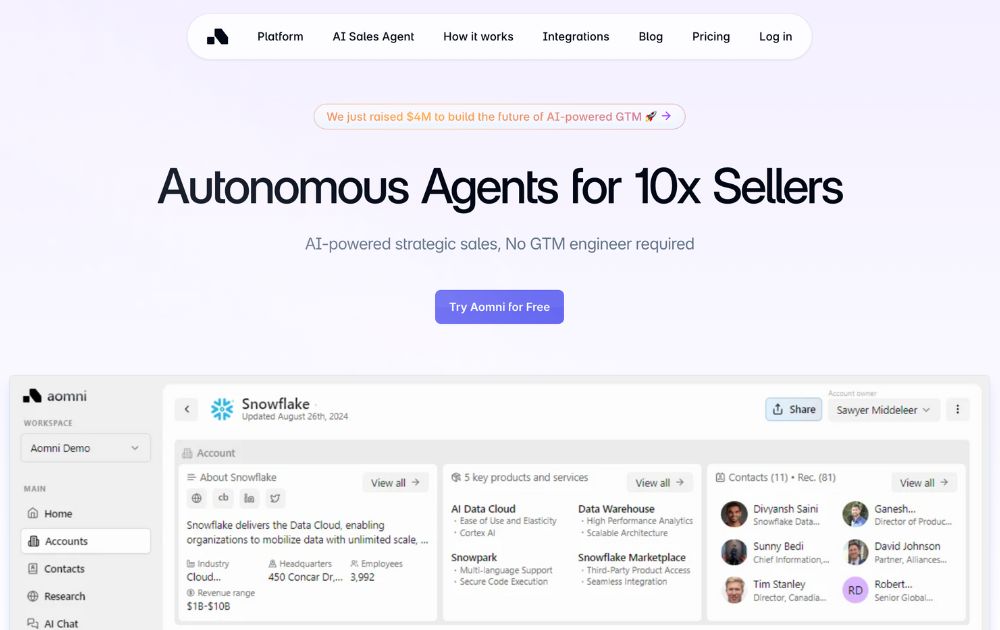
Packed with powerful AI-driven features, Aomni Agent is a tool that can help you grow your company’s outbound pipeline by conducting research to give you new Ideal Customer Profiles (ICPs). With it, you no longer have to create account plans for each of your prospects, as the AI tool will do it for you.
Aomni Agent engages with your customers, provides support, automates routine tasks, and gives you real-time insights and analytics, among many other features. To know its pricing and additional information, you need to contact them directly through their website.
2. Pictory
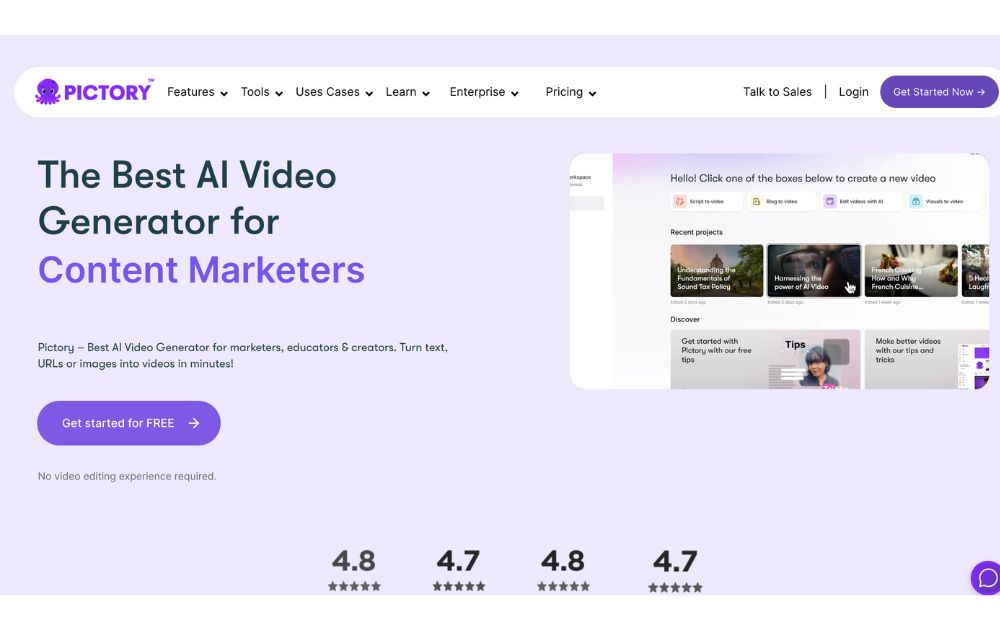
A video creation tool, Pictory, can help you create engaging and professional videos in minutes. It uses AI that automatically generates videos from your text, images, and audio. This means you get excellent results even without any video editing skills.
You can use Pictory to generate videos from your blog posts, articles, and other text. It can also edit existing videos and add images, music, or text. It offers a free trial and three plans with subscription fees that range from $23 to $119 per month.
3. Zeda.io
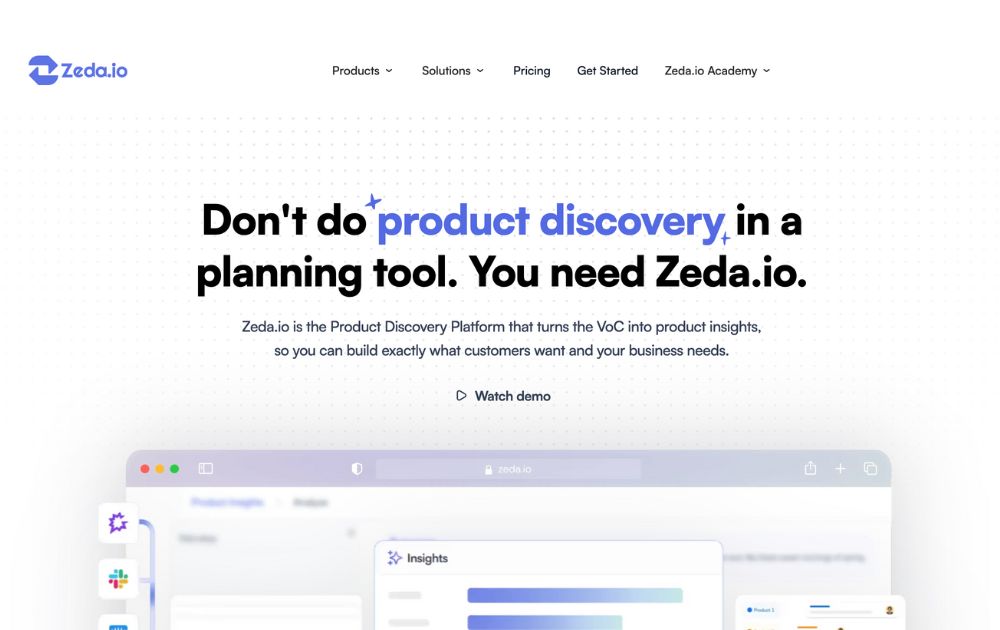
Zeda.io has grown into a powerful AI-powered product operating system. With its 2.0 update, the platform now connects customer feedback, product strategy, roadmapping, and internal documentation into a single intelligent workspace.
Its AI engine analyzes thousands of customer inputs, from surveys to reviews to support tickets, to identify patterns, prioritize features, and suggest product improvements. What used to take days of manual synthesis now takes minutes. The updated version also includes AI-generated product briefs, automated roadmap updates, and integrations with popular tools like Slack, Notion, and HubSpot.
4. Slite Ask
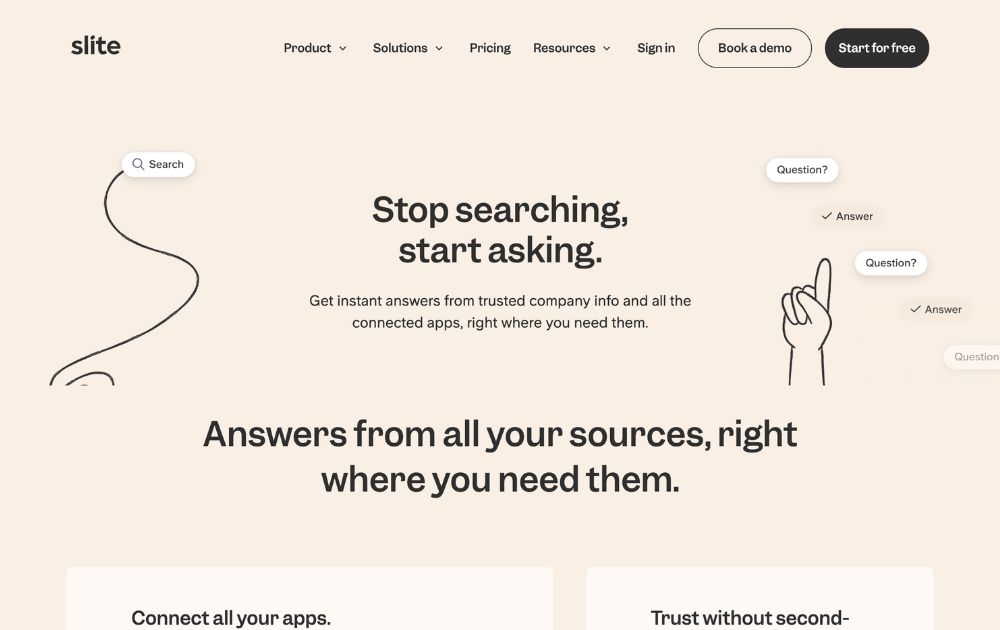
Slite Ask is one of the most reliable AI knowledge-base assistants for teams. Instead of manually searching docs or old messages, entrepreneurs can simply “ask” a question and get an instant answer based on their workspace knowledge.
The AI scans company documents, policies, SOPs, and internal notes to deliver accurate responses without hallucinations. This makes onboarding smoother and speeds up decision-making, especially for remote or hybrid teams.
5. Credal.ai
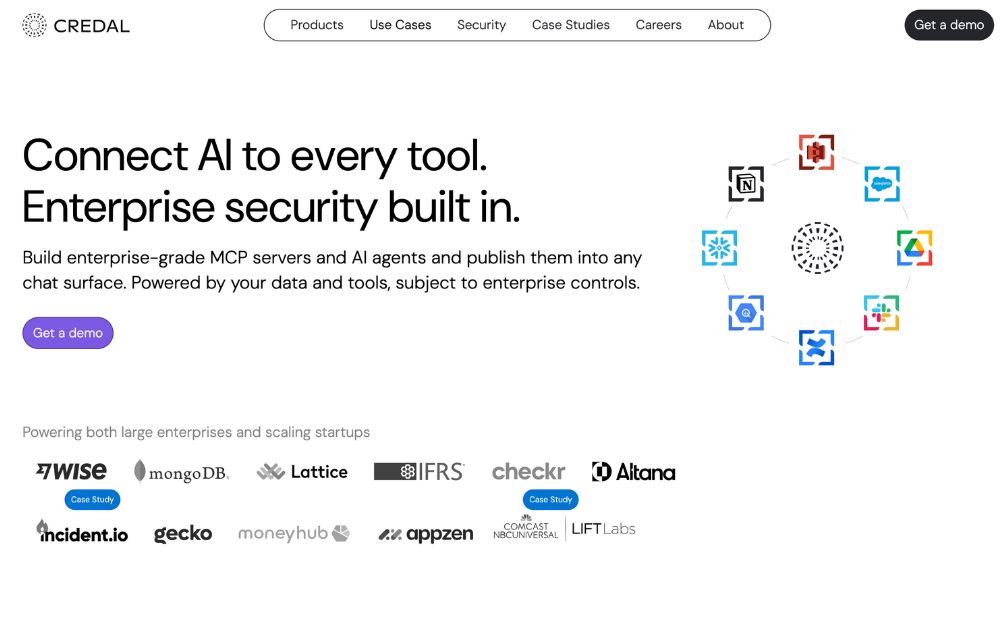
Keep your data safe with an AI tool that’s perfect for entrepreneurs. Credal.ai is a software that provides a secure environment for AI applications to run and monitors them for any potential security threats. This helps you protect your business’s sensitive data from unauthorized users.
Credal.ai protects your data from leaks, malicious codes, and unauthorized access. It has a free plan but with limitations, so to get the most out of this AI tool, a Team or Enterprise plan is recommended. Pricing starts at $500 per month.
6. Webscraping.AI
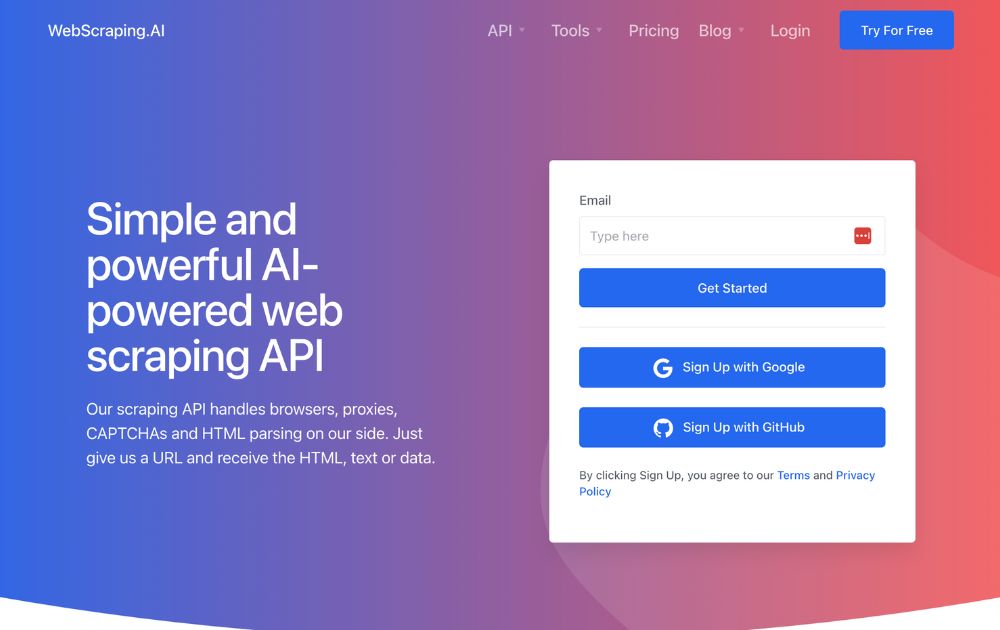
Web scraping is the process of extracting data from a website, such as stock prices, product details, company contacts, and many more. If you want access to this information, you’ll need Webscraping.AI. It is easy to use and won’t require you to have any coding or technical skills. All you need to do is enter the website you want to scrape, and the tool will automatically get the data from the website.
Webscraping.AI can help business owners make better decisions by providing accurate data to identify new opportunities. It can also help them make better decisions for their strategies. Pricing for this AI tool for entrepreneurs ranges from $29 to $249 per month, with no hidden fees.
7. ValueProp.dev
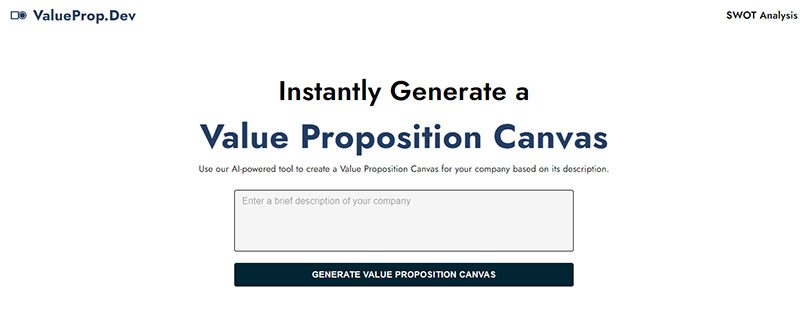
A value proposition is a statement that tells your customers what your product or service is all about. This can be tricky, but worry no more, as ValueProp.dev is an AI tool for entrepreneurs created explicitly for this. It uses machine learning to analyze your customer data to generate unique value propositions for you.
ValueProp.dev can help you improve your business by generating value propositions that significantly increase customer acquisition, retention, and sales. It is free for up to three value propositions, but they also have premium plans for more options and features. Pricing starts at $29 per month.
8. Lovo.ai
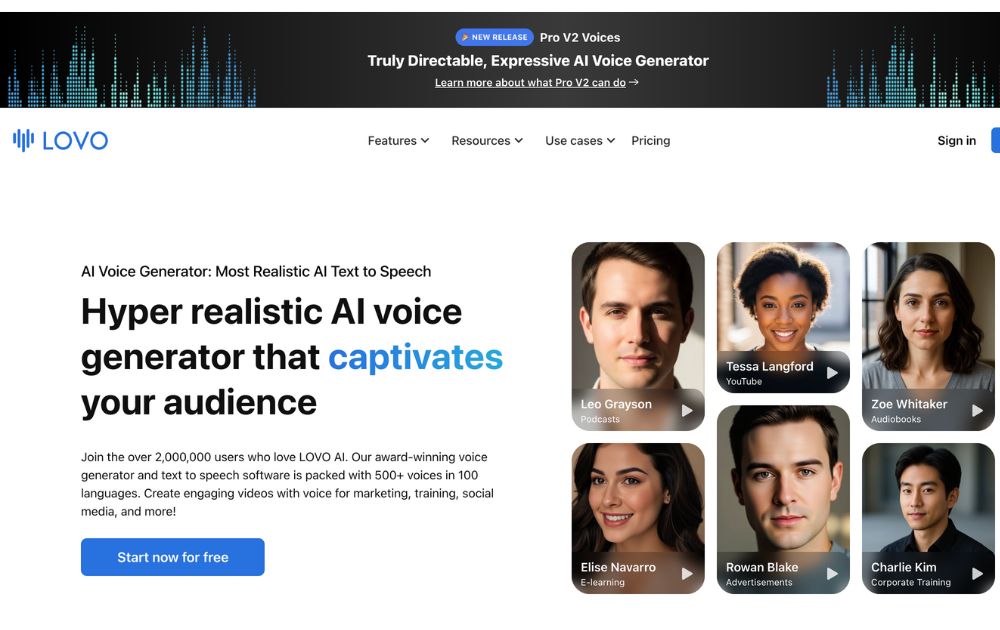
A text-to-speech and text-to-video platform, Lovo.ai can help you create engaging and informative content for your content marketing strategies. It uses AI to generate realistic and human-loke voiceovers, videos, avatars, and others. You can extend your reach globally as this tool can do voiceovers and videos in more than 140 languages.
Lovo.ai can help you increase your engagement, improve your SEO rankings, and boost conversions. You can try their free plan to give you an idea of what the tool can do for you. But for more features, a paid plan that starts at $19 per month can provide more value.
9. Zigpoll
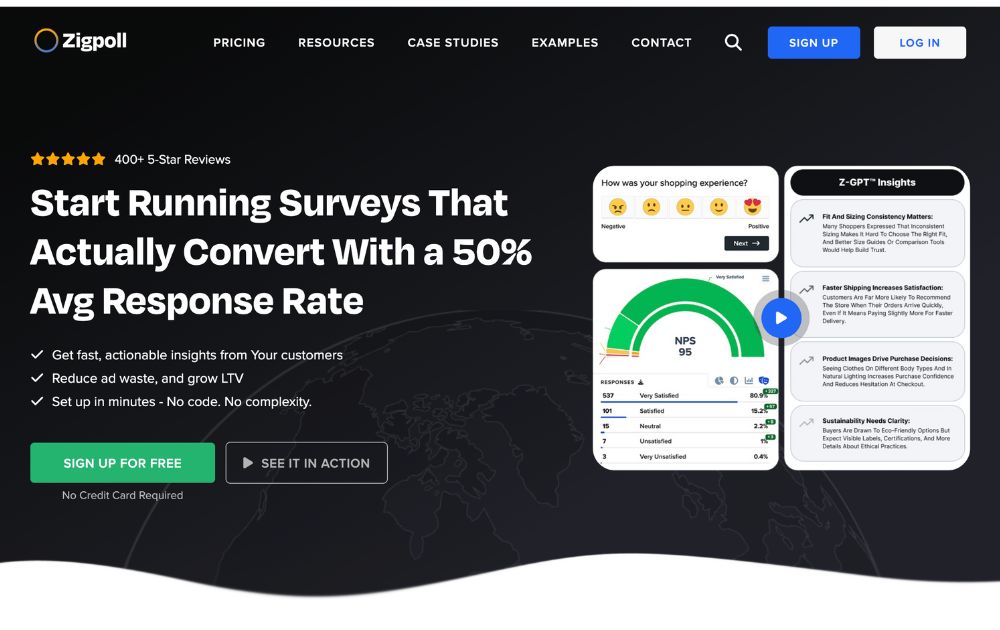
Zigpoll remains a solid choice for collecting customer insights, but its capabilities have expanded over the past two years. Today, Zigpoll uses AI to generate survey questions, summarize responses, detect sentiment, and even segment customers automatically.
Entrepreneurs can embed polls on websites, email campaigns, or post-purchase pages, then let Zigpoll’s AI categorize feedback into actionable insights. This helps brands quickly spot trends, product issues, or opportunities for upselling.
10. Pitches.ai
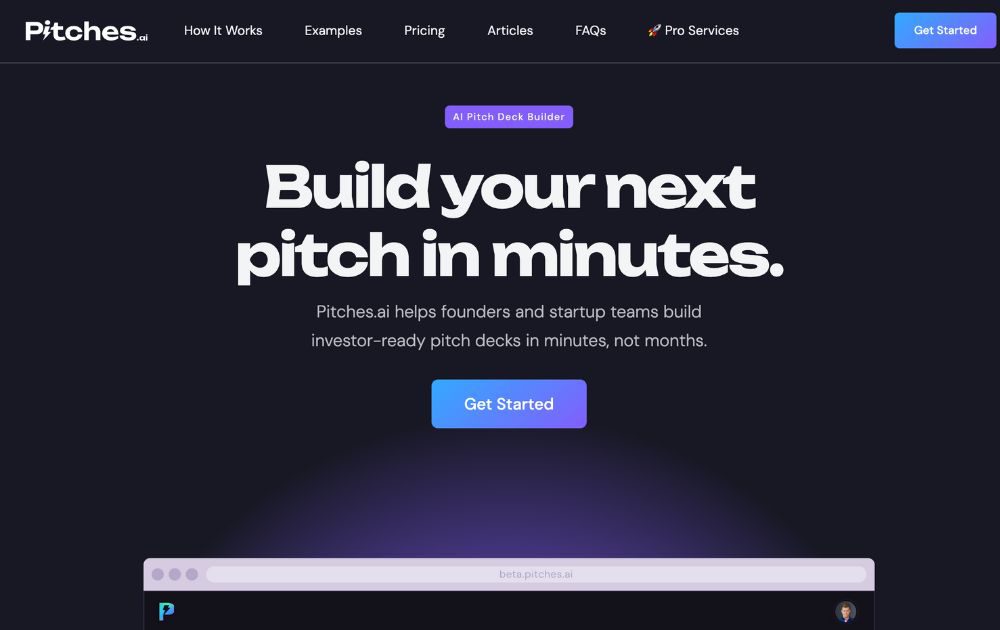
Are you looking to increase your business funding? Then creating the perfect pitch deck should be your priority. You can easily and quickly do this with Pitches.ai. It is an AI-powered tool for entrepreneurs to develop and refine pitch decks.
Pitches.ai analyzes pitch decks and gives you feedback on their structure, persuasiveness, and clarity. This gives you a higher probability of success. It offers four premium plans with prices ranging between $95 to $1,195.
Conclusion
Artificial intelligence is slowly becoming popular among business owners. Thanks to their many advantages, it’s no surprise that many will be using the technology from now on. These AI tools for entrepreneurs are a great example, and you should check them out today.
Featured Image Credit: Photo by Anna Shvets from Pexels
Business
What’s the Best Graphic Design Service for Education & eLearning?
Published
22 hours agoon
November 13, 2025
TLDR: Best unlimited graphic design services for education and eLearning: ideal for quick turnaround, high-quality designs, and affordable pricing.
84% of communication is visual. Thus, for a world of education and eLearning, graphic design is imperative in the creation of projects for students and complex concepts. From interactive course materials to compelling marketing, strong visuals drive success. But finding a reliable, affordable design partner is tough.
Thus, it’s hard to come by a reputable service that can provide all your needs at a reasonable cost when it comes to project designs, turnaround expectations, anticipated quality and budgetary allowances.
But never fear! We’ve vetted what’s best for you!
1. Penji
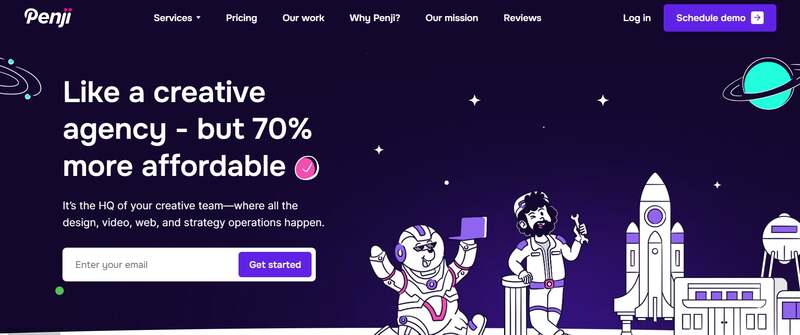
If you’re looking for the best for education and eLearning purposes, Penji has the best overall value as quality, turnaround time and offers have placed it at a reasonable flat fee monthly.
Penji is an unlimited graphic design service that works as you would expect – unlimited – which means that for a flat fee monthly, you’ll have access to your very own team of designers.
Features:
- A Well-Qualified Team of Designers: Whether you need e-learning interactive designs to course visuals (infographics, presentations) Penji’s graphic designers make everything visually appealing to an academic audience.
- Turnaround: Average turnaround is about 24-48 hours so you can keep churning out material for course creation or marketing.
- Unlimited Revisions: As many times as needed to get your requested project right.
- Accessibility and Submission Portal: Penji comes with a site that’s fairly user-friendly for ease of access in submissions, critiques and conversations.
2. Kimp
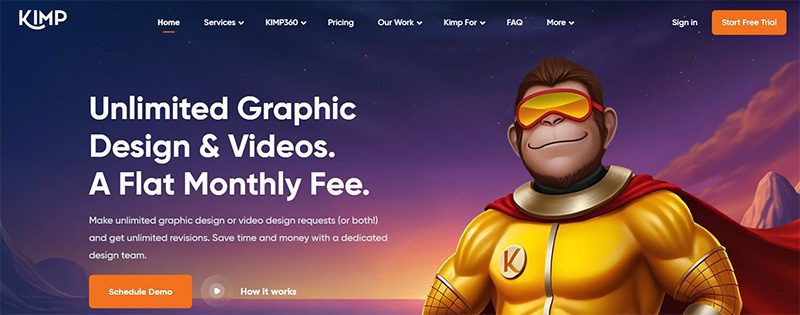
If you need an unlimited source and don’t mind one that’s second best, Kimp boasts graphics and even video. Consider this option with caution – some reviews do mention turnover can vary and this wouldn’t be the best reliable option if you’re on a time crunch for every project.
Features:
- Wide Range of Services: Kimp provides both graphic design and video services, offering a versatile creative solution.
- Dedicated Designers: You’ll work with a group as your designated team so you get to know your specific creators.
- Easier Feedback Opportunities: Feedback can be given on the Kimp site for creations with visual access as to what you want changed.
3. Design Pickle
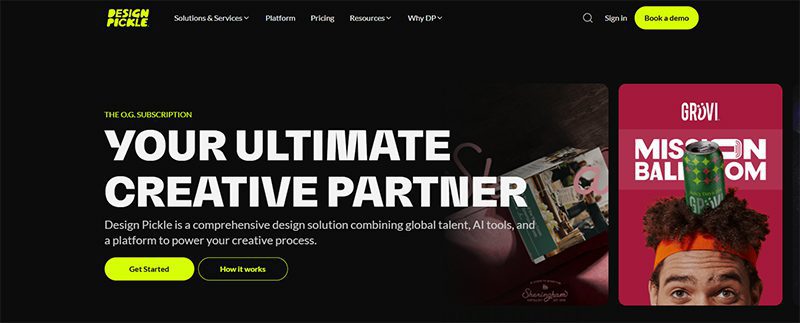
Design Pickle was one of the first unlimited graphic design services to go for an unlimited design game. This is helpful if you need custom illustrations or a presentation created for a polished look in any educated (or business) endeavor – higher tier subscriptions go with probability – but in all other worlds, it has more value than other sites when stacked against one another.
- Unlimited revisions to get the exact illustrations or graphics needed for presentations or other projects.
- Quick turnaround times to keep on schedule with 48 hour returns.
- Global Design Team: Boasts a diverse team of professional designers, offering expertise across multiple industries to match various client needs.
4. ManyPixels

ManyPixels is another reputable source that has unlimited graphic designs services but assignment transparency which means you’ll have one assigned designer to you, but they’re a bit more transparent with regards to who may (or not) be able to help you but will get back to you with good timing.
- One Dedicated Designer: ManyPixels is a company that does not have unlimited designs, however you’ll have one assigned who will know your needs better than most.
- Good Turnaround Time: Generally they’ll turn around assignments within 1-2 days after submission regardless of simplicity/complexity.
- Reliable Designs: Good for marketing or simple visuals/templates you’d want to use for educational continuity but they may not give as specialized feedback as you’d think.
Cover Image Credit: Photo by Fox on Pexels
Business
What are the Best Graphic Design Services for Fashion Brands?
Published
2 days agoon
November 11, 2025
For many businesses, graphic design means conversions, credibility, and brand recall. So, if you’re in the fashion industry, you also need to have significant visual assets if growth is your priority. If you need help finding the best graphic design service for your fashion brand, we made a list of the top five:
Penji

An on-demand graphic design platform, Penji offers unlimited graphic design services for fixed monthly fees. This allows you to send as many requests for lookbooks, catalogs, packaging designs, and many other marketing materials for less. Its team of top-notch designers assures you of consistent and high-quality work worthy of your fashion business.
Kimp

Built to support the creative needs of many businesses, including fashion, Kimp is another platform that offers unlimited design requests. It can craft product mockups, campaign visuals, packaging designs, and social media graphics, among others. It also provides video editing services, making it ideal for fashion companies that run reels, seasonal promos, or behind-the-scenes edits.
Designity

Combining agency-level creative direction with flexible access to US designers, Designity suits fashion brands that need polish, strategy, and scalability. They can provide you with social media graphics, online ads, label designs, logo and branding, and magazine layouts, among other key services.
Flocksy

If your business needs video editing, copywriting, and voice-over services, then Flocksy is the best graphic design service for your fashion brand. In addition, it also offers custom illustrations, packaging design, infographics, and many other design services. It operates on a flat-rate pricing model, making it a more cost-effective option than hiring freelancers or working with expensive agencies.
Reel Unlimited

With its predictable pricing and wide array of graphic design services, Reel Unlimited is an excellent design solution for fashion brands. Like many on this list, it offers unlimited design requests and fast turnaround times, making it the ideal option for those with tight schedules and limited budgets.

10 Best AI Tools for Entrepreneurs

Our Top 10 Video Editing Tools for Smarter Content Production

What’s the Best Graphic Design Service for Education & eLearning?

What are the Best Graphic Design Services for Fashion Brands?

How TikTok and Instagram Track You Using In-App Browsers

What’s the Best Graphic Design Service for Marketing Agencies?

What’s the Best Graphic Design Service for Tech Companies?

Top 10 Tablets to Use in 2025

Our Top 10 Video Editing Tools for Smarter Content Production

How TikTok and Instagram Track You Using In-App Browsers

Top 10 Free and Paid Employee Communication Tools

10 Best AI Tools for Entrepreneurs

10 Best Photo Editing Apps for Personal and Business Use in 2026

What’s the Best No Limit Creatives Alternatives?
Trending
- Technology2 hours ago
Our Top 10 Video Editing Tools for Smarter Content Production
- Technology3 days ago
How TikTok and Instagram Track You Using In-App Browsers
- Business10 minutes ago
10 Best AI Tools for Entrepreneurs
- Uncategorized3 days ago
What’s the Best Graphic Design Service for Marketing Agencies?
- Business2 days ago
What are the Best Graphic Design Services for Fashion Brands?
- Business22 hours ago
What’s the Best Graphic Design Service for Education & eLearning?






